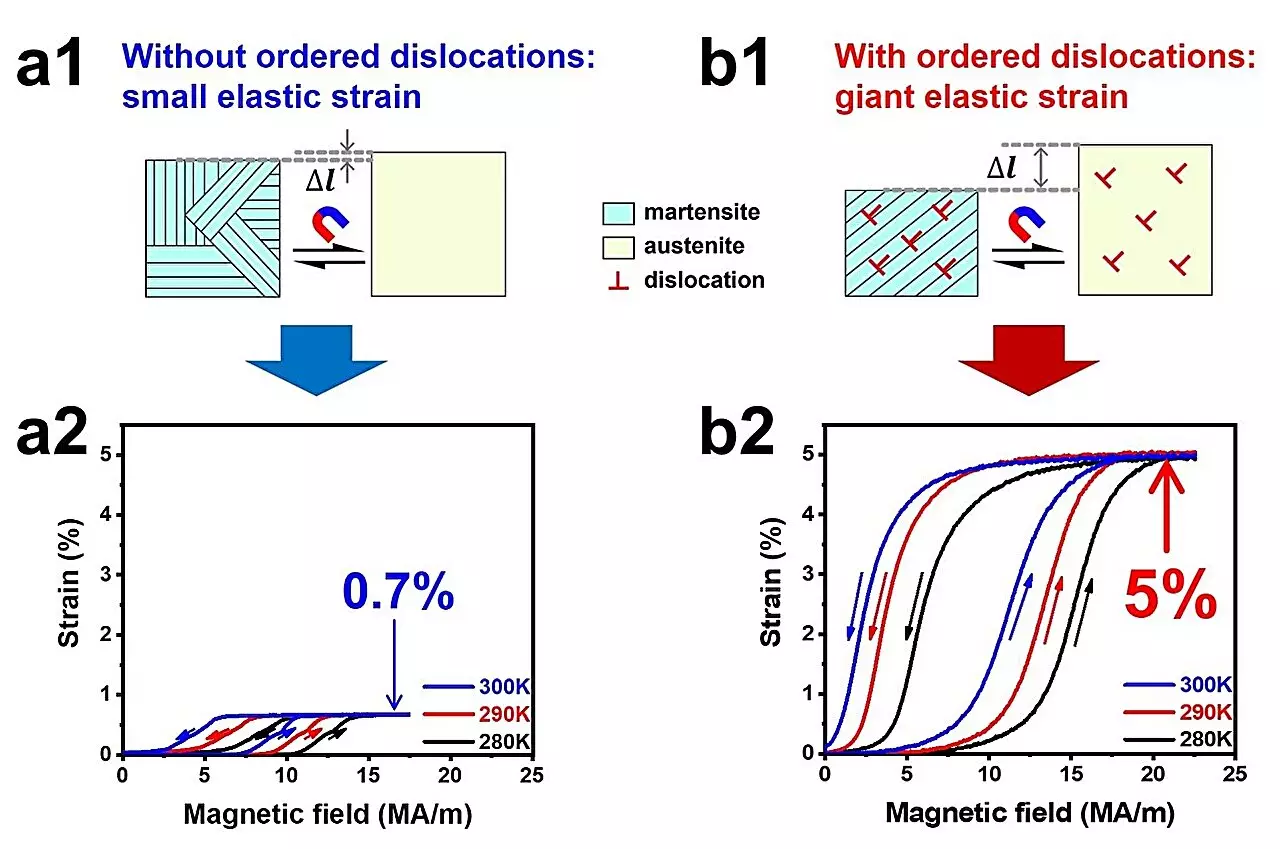Magneto-superelasticity has recently taken a giant leap forward with the development of a Ni34Co8Cu8Mn36Ga14 single crystal that has achieved a remarkable 5% magneto-superelasticity. Unlike traditional materials that only exhibit a strain of 0.2%, this new crystal is capable of returning to its original shape after deformation with a significantly higher strain. This breakthrough opens up exciting possibilities for the development of contactless material operation, new actuators with larger stroke capabilities, and efficient energy transducers.
The research team, led by Prof. Jiang Chengbao and Prof. Wang Jingmin, employed a stress-constrained transition cycling (SCTC) training method to introduce ordered dislocations with a specific orientation in the Ni34Co8Cu8Mn36Ga14 single crystal. These ordered dislocations played a crucial role in influencing the formation of preferentially oriented martensitic variants during the magnetically induced reverse martensitic transformation. Phase field simulations confirmed that the internal stress generated by these organized dislocations was instrumental in shaping the specific martensitic variants.
The successful combination of reversible martensitic transformation with the preferential orientation of martensitic variants led to the achievement of a remarkable 5% magneto-superelasticity in the single crystal. Furthermore, a device utilizing a pulsed magnetic field was designed using this crystal, demonstrating a large stroke at room temperature with a pulse width of 10 ms. This breakthrough paves the way for rapid responses to external stimuli, making it a promising candidate for various applications in functional materials engineering.
The development of the Ni34Co8Cu8Mn36Ga14 single crystal with a giant magneto-superelasticity of 5% represents a significant advancement in the field of material science. The innovative approach of defect engineering and stress-constrained transition cycling has opened up new possibilities for high-performance functional materials. With further research and development, the implications of this breakthrough could revolutionize the way we design and utilize smart materials in various industries.


Leave a Reply